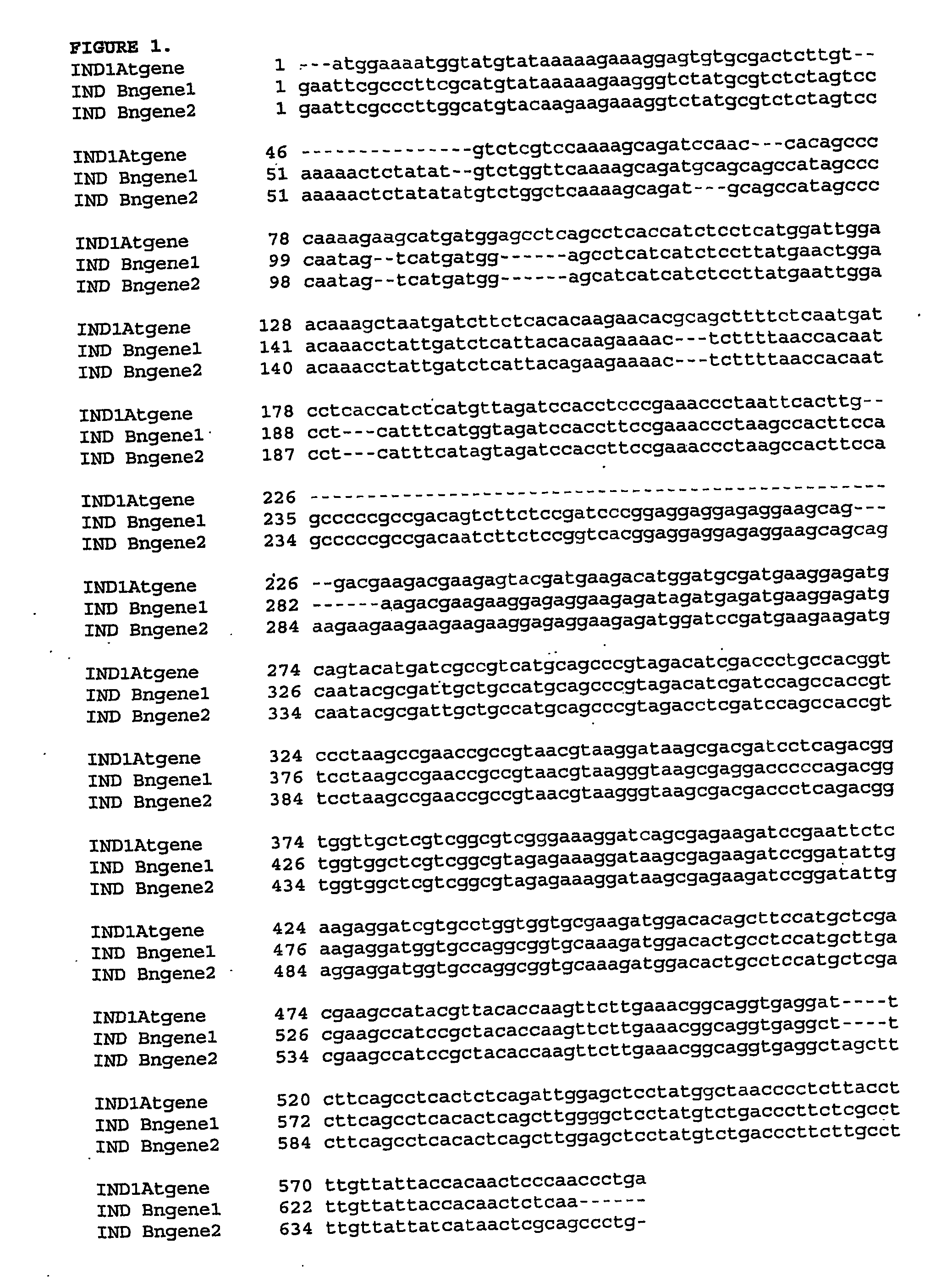Methods and means for delaying seed shattering in plants
a technology of plant seed and dehiscence, applied in the field of plant genetic engineering, can solve the problems of increasing volunteer growth, reducing seed recovery, and shattering of seeds attached to the replum, so as to reduce seed shattering and increase the resistance of the pod
- Summary
- Abstract
- Description
- Claims
- Application Information
AI Technical Summary
Benefits of technology
Problems solved by technology
Method used
Image
Examples
example 1
Construction of Chimeric Genes Encoding dsRNA Capable of Reducing the Expression of a Gene Involved in Dehiscence Zone and Valve Margin Development and Introduction Into Plants
[0097] A. Based on IND gene sequences
[0098] A 5′ end fragment of the IND gene of Arabidopsis thaliana or of the homologous genes from Brassica napus was amplified by PCR under standard conditions, using as template genomic DNA from Arabidopsis thaliana or PCR amplified DNA from B. napus comprising the sequences of SEQ ID No 2 or SEQ ID No 3 and the following oligonucleotides: [0099] For the 5′ end of the At-IND gene: an oligonucleotide comprising the sequence of SEQ ID No 7 and an oligonucleotide comprising the sequence of SEQ ID No 8, equipped with appropriate restriction enzyme sites at the 5′ end of the oligonucleotides to allow directional cloning. [0100] For the 5′ end of the BN1-IND gene: an oligonucleotide comprising the sequence of SEQ ID No 4 and an oligonucleotide comprising the sequence of SEQ ID ...
example 2
Analysis of Transgenic Arabidopsis Thaliana Lines and Brassica Napus Lines Comprising the Chimeric Genes of Example 1
[0178] A. Transgenic Arabidopsis thaliana Lines.
[0179] Transgenic Arabidopsis thaliana lines were obtained by transformation using all of the T-DNA vectors of Example 1. The obtained lines were analyzed for podshatter resistance. Pods from untransformed wt Arabidopsis lines open spontaneously at maturity. In contrast, each of the population of transgenic lines, transformed using particular T-DNA vectors, contained transgenic lines, the plants of which developed pods which did not open spontaneously at maturity (indicated herein as podshatter resistant). The fraction of transgenic lines with podshatter resistance in the total population of lines transformed using a particular T-DNA vector varied between 23% and 98% (see Table 1). The physical forces needed to open closed mature pods of the podshatter resistant transgenic lines were determined in a semi-quantitive way...
PUM
| Property | Measurement | Unit |
|---|---|---|
| Fraction | aaaaa | aaaaa |
| Fraction | aaaaa | aaaaa |
| Fraction | aaaaa | aaaaa |
Abstract
Description
Claims
Application Information
 Login to View More
Login to View More - R&D
- Intellectual Property
- Life Sciences
- Materials
- Tech Scout
- Unparalleled Data Quality
- Higher Quality Content
- 60% Fewer Hallucinations
Browse by: Latest US Patents, China's latest patents, Technical Efficacy Thesaurus, Application Domain, Technology Topic, Popular Technical Reports.
© 2025 PatSnap. All rights reserved.Legal|Privacy policy|Modern Slavery Act Transparency Statement|Sitemap|About US| Contact US: help@patsnap.com

